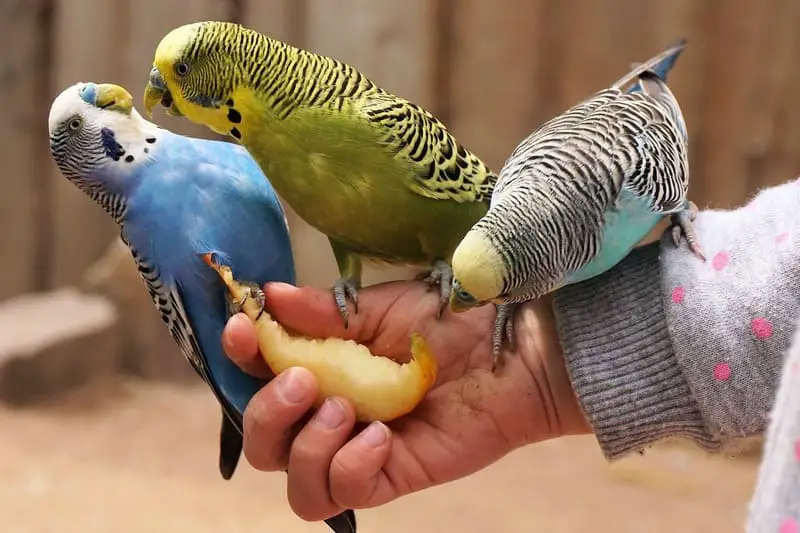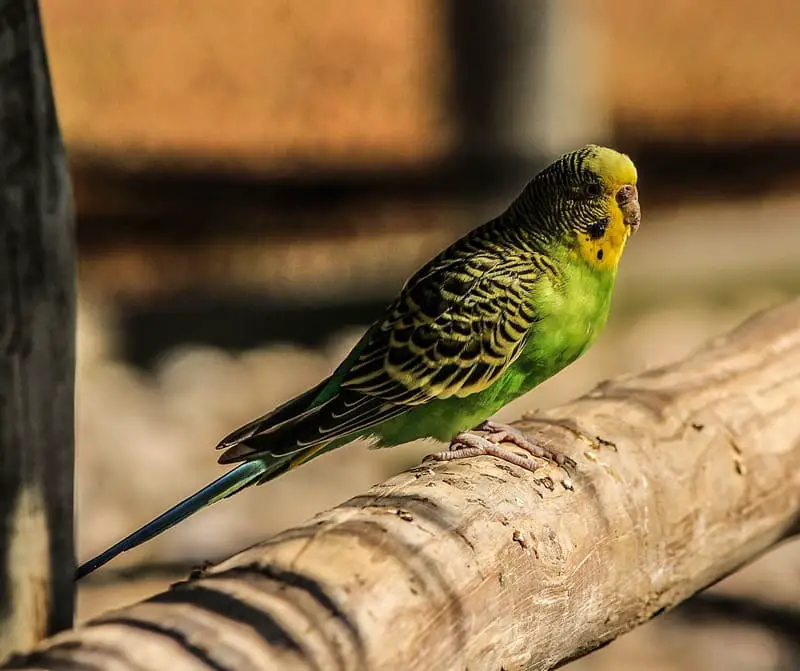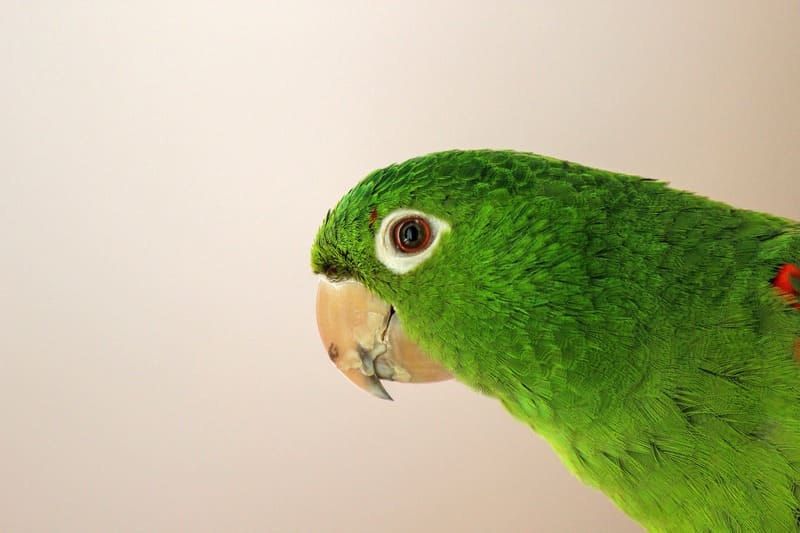Parakeets, also known as budgerigars or budgies, are popular pet birds known for their vibrant plumage and lively personalities. One common question among parakeet owners is whether they should let their feathered friends out of the cage for exercise and socialization. In this comprehensive guide, we will explore the benefits and considerations of allowing your parakeets out of the cage, as well as tips for doing so safely and responsibly.

The Natural Behavior of Parakeets
Before delving into the question of whether to let your parakeets out of the cage, it’s essential to understand their natural behavior and instincts. Parakeets are social, active birds that thrive on interaction, exploration, and exercise. In the wild, they are highly nomadic, flying and foraging for food throughout the day. This behavior is deeply ingrained in their genetic makeup, and it continues to shape their needs and preferences as pets.
Parakeets are intelligent and curious creatures. They enjoy mental stimulation, socializing with their human caregivers, and exploring their surroundings. Allowing them out of the cage can provide enrichment and opportunities for physical activity, helping them lead happier and healthier lives.
Benefits of Letting Parakeets Out of the Cage
There are several advantages to allowing your parakeets out of the cage for exercise and socialization:
1. Physical Exercise
Parakeets need regular exercise to maintain their physical health. Flying outside the cage allows them to stretch their wings, strengthen their muscles, and improve their overall fitness. This exercise is essential for preventing obesity, which can result from a sedentary lifestyle and an inadequate diet.
2. Mental Stimulation
Parakeets are intelligent birds that require mental stimulation to thrive. When they explore new environments, interact with toys, and engage with their surroundings, they receive the mental enrichment they need. This can prevent boredom and related issues such as feather plucking or aggressive behavior.
3. Social Interaction
Parakeets are highly social creatures that enjoy spending time with their human caregivers. Allowing them out of the cage provides an opportunity for bonding, interaction, and companionship. Socializing with your parakeets can strengthen your relationship with them and enhance their trust and affection toward you.
4. Environmental Enrichment
Exploring a safe and bird-proofed room can offer environmental enrichment for your parakeets. They can investigate new textures, objects, and spaces, stimulating their curiosity and providing a change of scenery from the inside of their cage.
5. Emotional Well-Being
The mental and physical stimulation parakeets receive from time outside the cage contributes to their emotional well-being. A happy, content parakeet is less likely to exhibit behavioral issues and more likely to be a joyful companion.
Considerations for Letting Parakeets Out of the Cage
While there are many benefits to letting your parakeets out of the cage, it’s important to consider some essential factors and responsibilities:
1. Safety First
Safety is the paramount concern when allowing parakeets to roam outside their cage. Ensure that the environment is bird-proofed and free from potential hazards, including toxic plants, open windows, mirrors that may confuse them, and other animals that may pose a threat.
2. Supervision
Always supervise your parakeets when they are out of the cage. Even in a bird-proofed room, accidents can happen. Being present allows you to intervene if needed and ensures their safety.
3. Clip or Flight?
You have the option of whether to clip your parakeets’ wings or allow them to maintain their ability to fly. Clipping their wings can prevent them from flying great distances and crashing into walls or windows, but it also limits their exercise. If you decide to clip their wings, ensure it is done by a qualified avian veterinarian to prevent injury.
4. Timing Matters
Choose a time for their out-of-cage experience when you can actively engage with them. Parakeets are more likely to be receptive to interaction when they are not sleepy or hungry.
5. Training and Recall
Consider training your parakeets to return to their cage or a designated area on command. This recall training can be useful in emergencies and ensures that they don’t get into trouble when outside the cage.
6. Cleaning Up
Parakeets can be messy, and they may leave droppings, feathers, and food particles in their wake. Be prepared for a bit of cleanup after their out-of-cage time.
7. Set Boundaries
Define boundaries for your parakeets’ out-of-cage exploration. For example, you may want to limit their access to certain rooms or areas to reduce potential hazards.
8. Provide Mental Stimulation
To keep your parakeets engaged and happy during their out-of-cage time, offer a variety of toys, perches, and play areas. These can include swings, ladders, and puzzles to keep them mentally stimulated.
9. Feeding and Water
Ensure that food and water are available when your parakeets are outside the cage. This allows them to eat and drink as needed during their exercise and playtime.

How to Bird-Proof a Room
Bird-proofing a room is essential to provide a safe environment for your parakeets. Here are steps to take when bird-proofing a room:
- Remove Hazards: Identify and remove potential hazards, including toxic plants, electrical cords, open windows or doors, and any objects that parakeets could chew on or ingest.
- Secure Mirrors and Windows: Cover mirrors or reflective surfaces that can confuse parakeets and cause collisions. Use screens or safety nets on windows to prevent escapes or accidents.
- Close Doors: Keep doors closed to prevent parakeets from entering rooms where they may be exposed to dangerous situations or toxic substances.
- Secure Pets: Ensure that other pets, such as cats and dogs, are safely contained or kept away from the area where the parakeets are exploring.
- Hide Small Objects: Remove small objects or items that parakeets could swallow or choke on. Parakeets are naturally curious and may investigate small items they find on the floor.
- Cover Exposed Wires: Protect electrical cords and cables with plastic tubing or wire covers to prevent parakeets from chewing on them.
- Designate Play Areas: Set up designated play areas with bird-safe toys and perches to keep your parakeets engaged.
- Check for Openings: Inspect the room for openings or gaps where parakeets could hide or get stuck. Seal these areas to prevent access.
- Temperature Control: Ensure the room is at a comfortable temperature for your parakeets. Avoid extreme heat or cold that can be harmful to them.
- Supervision: Always supervise your parakeets while they are outside their cage to ensure their safety.
Recall Training for Parakeets
Recall training is a valuable tool for responsible parakeet ownership. It allows you to call your parakeets back to their cage or a designated area when needed. Here are steps to train your parakeets for recall:
- Start in a Small Space: Begin recall training in a small, enclosed space where your parakeets are familiar with their cage. Open the cage door and allow them to exit freely.
- Use a Command: Choose a specific word or phrase, such as “Come back” or “Time to go home.” Use this command consistently when you want your parakeets to return to their cage.
- Offer a Reward: When your parakeets respond to the command and return to their cage, offer a small reward, such as a favorite treat.
- Gradually Increase Distance: As your parakeets become more accustomed to the recall command, gradually increase the distance from their cage. Practice the command regularly.
- Positive Reinforcement: Continue to offer positive reinforcement, such as treats and praise, to reinforce the behavior.
- Be Patient: Recall training may take time, and it’s essential to be patient and consistent. Some parakeets may learn more quickly than others.
- Practice Safety: Always prioritize safety. If your parakeets are in a situation where safety is a concern, take action to ensure their well-being before focusing on recall.
Clipped Wings vs. Flight
The decision to clip your parakeets’ wings or allow them to maintain their flight capabilities is a matter of personal choice and should be made based on your parakeets’ specific needs and your living situation. Here are the pros and cons of both options:
Clipped Wings:
Pros:
- Reduced risk of flying into windows or mirrors.
- Easier control of their movements.
- Less chance of them escaping or getting into hazardous areas.
- May discourage territorial behavior or aggression during out-of-cage time.
Cons:
- Limited exercise, which can lead to weight gain and muscle atrophy.
- Reduced mental and physical stimulation.
- May affect their overall well-being and happiness.
Flighted Parakeets:
Pros:
- Provides ample exercise and mental stimulation.
- Mimics their natural behavior.
- Enhanced well-being and physical health.
- Opportunity for more social interaction.
Cons:
- Potential for accidents, such as flying into windows or mirrors.
- Risk of escape if not in a bird-proofed room.
- Requires close supervision during out-of-cage time.
Ultimately, the choice between clipped wings and flight should be based on your understanding of your parakeets’ individual needs and your ability to provide a safe environment.

Tips for Letting Parakeets Out of the Cage
Here are some additional tips for letting your parakeets out of the cage safely and responsibly:
- Prepare the Environment: Ensure the room is bird-proofed and free from hazards before opening the cage.
- Limit the Out-of-Cage Time: Start with short, supervised sessions and gradually increase the duration as your parakeets become more comfortable with their surroundings.
- Monitor Behavior: Pay attention to your parakeets’ body language and behavior. Watch for signs of fear, discomfort, or stress and adjust the environment or your interaction accordingly.
- Offer Treats and Rewards: Use treats and positive reinforcement to encourage desired behavior and recall.
- Rotate Toys: Change the toys and perches in their cage regularly to keep their environment stimulating and interesting.
- Interact with Them: Engage with your parakeets during their out-of-cage time. Play with them, talk to them, and offer companionship.
- Stick to a Schedule: Establish a routine for out-of-cage time to help your parakeets anticipate and enjoy their sessions.
- Consider a Play Gym: A parakeet play gym can provide a safe and fun space for exercise and interaction outside the cage.
- Be Patient: Not all parakeets will be comfortable outside the cage immediately. Be patient and allow them to adapt at their own pace.
- Provide for Their Basic Needs: Ensure that food, water, and a comfortable resting place are available during out-of-cage time.
Conclusion
Letting your parakeets out of the cage can be a rewarding and enriching experience for both you and your feathered companions. It provides them with the opportunity to exercise, explore, and socialize, enhancing their physical and mental well-being. However, it’s essential to prioritize safety, supervision, and bird-proofing to ensure that their out-of-cage time is enjoyable and risk-free.
Understanding your parakeets’ needs and preferences, choosing whether to clip their wings or allow them to fly, and implementing recall training can all contribute to a positive out-of-cage experience. Ultimately, the decision to let your parakeets out of the cage should be guided by their unique characteristics and your commitment to providing a safe and enriching environment for them to thrive.